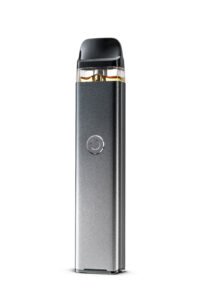RFID (Radio Frequency Identification) keys have become a popular solution for secure access control, allowing you to easily unlock doors, safes, and even start vehicles with just a tap. Whether you’ve lost access to your RFID key or simply need to update it for a new system, you might be wondering how to program or reprogram your RFID key at home. This process is simpler than you might think, but it does require a few specific tools and knowledge of your system. In this guide, we’ll walk you through the steps to successfully program and reprogram your RFID key at home.
1. Understanding RFID Key Technology
Before diving into the programming process, it’s important to understand how RFID key technology works. RFID keys use a unique identifier that communicates with a reader when the key is brought into close proximity. These keys are used for a variety of purposes, such as electronic access to buildings, gates, vehicles, and even personal devices. When you program or reprogram an RFID key, you’re essentially assigning a new identity or function to the key’s internal chip so that it can work with the corresponding system.
2. What You’ll Need to Program or Reprogram Your RFID Key
To program or reprogram an RFID key at home, you will need the following:
- RFID key reader/writer: A device that can read and write information to the RFID key. These can be purchased online or at electronics stores.
- Computer or smartphone: To connect the RFID reader to your system and run the necessary software.
- Access to the RFID system: If you’re reprogramming an existing system (e.g., a security system or vehicle), ensure you have administrator access or the required credentials.
- Your RFID key: The key that you need to program or reprogram.
3. Step-by-Step Guide to Programming Your RFID Key
Step 1: Connect the RFID Reader/Writer
Begin by connecting the RFID reader/writer to your computer or smartphone. Some devices may require specific drivers or software to operate, so ensure you’ve installed everything correctly according to the manufacturer’s instructions.
Step 2: Insert the RFID Key
Place the RFID key into the reader/writer. Depending on the type of RFID key, you may need to insert it into a physical slot or simply hold it close to the reader’s sensor.
Step 3: Access the Programming Software
Launch the programming software on your computer or smartphone. This software should allow you to interface with the RFID key, where you can view and modify its settings.
Step 4: Assign a Unique ID or Configuration
Using the software, you will either assign a new unique identifier (UID) to your RFID key or reprogram the key to a new configuration. For access control systems, this typically involves linking the key to a specific door or entry point.
Step 5: Test the Key
Once the key has been programmed or reprogrammed, test it by holding it near the reader to see if it activates the correct system. If the key is intended to unlock a door or gate, verify that it works as expected.
4. Reprogramming an RFID Key
If you’re reprogramming an existing RFID key, the process is similar to the one above, but you will also need to delete the old settings or information from the key. This step is important if you want to prevent the old RFID key from continuing to work on your system.
Step 1: Erase the Existing Information
Before adding new data to the RFID key, you’ll need to erase the old programming. Most RFID readers/writers have an option to clear the existing memory or reset the key to its factory settings.
Step 2: Program the New Settings
After the key is cleared, follow the same steps as programming a new RFID key. Assign the key a new unique identifier and link it to your desired system or function.
Step 3: Test the Reprogrammed Key
Once the key has been reprogrammed, test it thoroughly to ensure it’s functioning correctly. You may need to repeat the process a few times to troubleshoot any issues.
5. Common Issues and Troubleshooting
While programming or reprogramming an RFID key is generally straightforward, you may encounter some common issues, such as:
- Key not working after programming: This can happen if the reader/writer wasn’t properly connected or if the software didn’t execute the programming correctly. Try redoing the process and ensuring all steps were followed.
- Software compatibility issues: Make sure the software is compatible with both your RFID key and reader/writer. Some older systems may require special software or drivers to function properly.
- Reader/writer not recognizing the key: This could be due to a malfunction or a failure in the connection between the key and the reader. Check the connection and try again.
Max Mobile and Gifts: Your Trusted Source for RFID Key Solutions
Max Mobile and Gifts is the best place for professional phone and iPhone repair services in Vancouver, Canada. We also offer a wide selection of accessories and gifts for all occasions. Whether you need assistance programming or reprogramming your RFID key, or if you’re looking for other mobile and tech services, Max Mobile and Gifts has you covered. Our team of experts is here to provide you with top-quality solutions for all your technology needs.
Conclusion
Programming and reprogramming your RFID key at home can save you time and money while ensuring that your security systems remain up-to-date and functional. With the right tools and knowledge, this process is simple and efficient. Whether you’re programming a new key or reprogramming an existing one, following these steps will ensure that your RFID key works seamlessly. For any RFID-related services or mobile repairs, visit Max Mobile and Gifts, where we provide expert support for all your tech needs!










